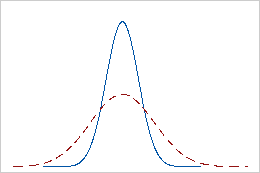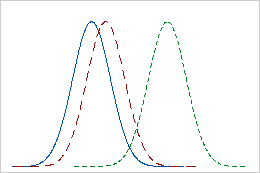Repeatability and reproducibility are the two components of precision in a measurement system. To assess the repeatability and reproducibility, use a gage study ().
- Repeatability
- Repeatability is the variation due to the measurement device. It is the variation that is observed when the same operator measures the same part many times, using the same gage, under the same conditions.
- Reproducibility
- Reproducibility is the variation due to the measurement system. It is the variation that is observed when different operators measure the same part many times, using the same gage, under the same conditions.


